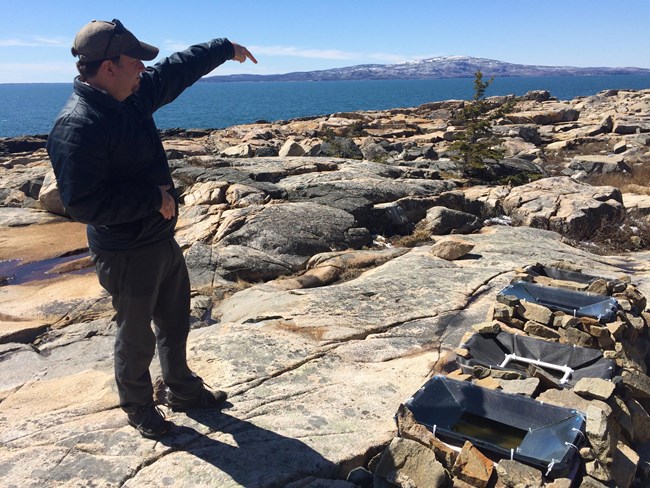Last updated: October 8, 2021
Article
Growing a Network of Second Century Stewardship Parks

Schoodic Institute
The National Park Service (NPS) has a long history of supporting science and has increased investments in science over time. Science also played a role in the founding of many early parks. Science is necessary to achieve the agency’s mission over its second century—a time of rapid change that brings many challenges for protecting park resources and engaging the public. NPS is taking a number of actions to pursue these goals, including a new community of practice for science communication and a steering committee for citizen science.
The goals of Second Century Stewardship (SCS) are:
- Advance conservation science by strategically recruiting and supporting a new generation of scientists to lead transformational research in national parks.
- Enhance science communication to inspire and inform stewardship of our natural and cultural heritage.
- Leverage park science to enhance learning and engagement for students, educators, and the broader public.
SCS is coordinated by Schoodic Institute, Acadia National Park’s primary partner in science and education. The institute’s campus in Winter Harbor, Maine, a former Navy base, is the largest of 18 NPS Research Learning Centers.
Since 2016, SCS has helped to bring important research to Acadia National Park that is informing management decisions. Inaugural fellow Abbey Paulson’s environmental DNA study evaluated the effectiveness of stream connectivity restoration projects. Jenny Smetzer is identifying climate refugia across the park’s diverse landscape. Allison Gardner is testing techniques for managing tick populations. Alessio Moretelliti's Fellow communications have reached an estimated 50,000 people and 1,000 students. Highly satisfied with the program, Acadia National Park staff and the project partners are taking steps to implement it permanently and expand across the National Park system.
“The goal of the SCS initiative is not to replace existing practices, but to build a community of people to strengthen practices through the park system. SCS partners can provide assistance and technical support to other parks interested in taking a similar approach to Acadia National Park,” said SCS Institute President and CEO Don Kent.
For more information about Schoodic, please contact Abe Miller-Rushing, Acadia National Park Science Coordinator or Nick Fisichelli, Chief of Staff SCS Institute at Acadia National Park.
